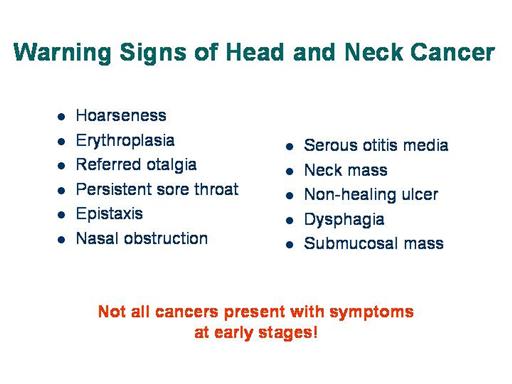| front |1 |2 |3 |4 |5 |6 |7 |8 |9 |10 |11 |12 |13 |14 |15 |16 |17 |18 |19 |20 |21 |review |
 |
In some cases, head
and neck cancer produce early warning signs that can lead to early
diagnosis and a high probability of cure.
For example, hoarseness frequently occurs in the very earliest
laryngeal glottic cancers. Up to
80 percent of early oral cancers will demonstrate erythroplasia.
Referred otalgia may
accompany a cancer of the larynx, pharynx or oral cavity.
In addition, a persistent sore throat for longer than two weeks
in a patient with a smoking history should arouse suspicion for a
possible cancer in the larynx and/or pharynx.
Epistaxis, nasal
obstruction, and serous otitis media can all herald a nasopharyngeal
cancer. Early cancer in many
sites, e.g., the epiglottis, pyriform sinus, nasopharynx and paranasal
sinuses, are silent with few signs.
Although not an early sign, a neck mass may be the first
presenting symptom. Any high-risk
patient with a neck mass should be thoroughly evaluated for a head and
neck primary cancer. A
non-healing ulcer, dysphagia or a submucosal mass may also serve as
warning signs of potential carcinomas.
|